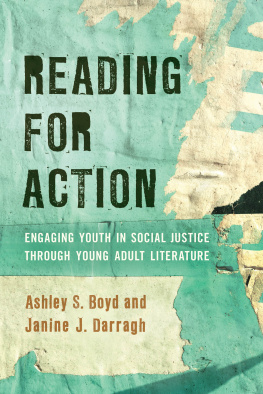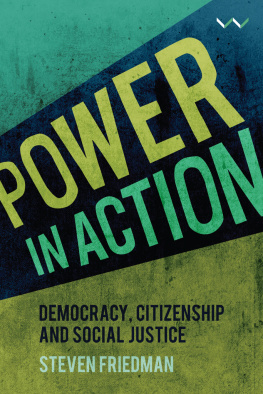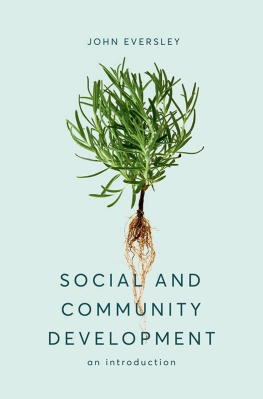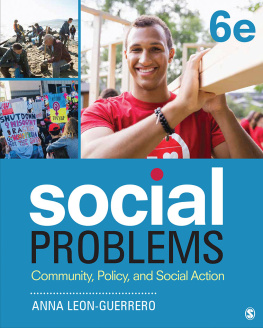
CHANGE!
CHANGE! A Guide to Teaching Social Action is for faculty, staff, and students who are interested in developing a college course or co-curricular experience using social action. Social action occurs when everyday people band together to develop their power in order to change policy. What distinguishes a social action class from other social change courses is that students are actively involved in enacting a policy change of their choice, thus providing students with a first-hand experience of democracy and power. As part of the social action class, students can start a new campaign, keep a campaign going from the previous semester, reactivate a campaign from a previous year, or join a community campaign.
The goal of this book is to train the next generation of democratic citizens and participants. The hope is that if teaching social action is mainstreamed in higher education, students will be able to do democracy more effectively, and help to preserve it at the same time. More specifically, the book provides an overview of the history of college social action, explores what needs to be considered before starting a social action class, explains how students choose their campaigns and launch them, and how students plan, implement, and evaluate their campaigns.
Scott Myers-Lipton, Professor of Sociology at San Jos State University, is the author of CHANGE! A Student Guide to Social Action, Ending Extreme Inequality: An Economic Bill of Rights Approach to Eliminate Poverty, Rebuild America: Solving the Economic Crisis through Civic Works, and Social Solutions to Poverty: Americas Struggle to Build a Just Society. He is the recipient of the Manuel Vega Latino Empowerment Award, San Jos/Silicon Valley NAACP Social Justice Award, the Elbert Reed Award from the Dr. Martin Luther King Jr. Association of Santa Clara County, and the Changer Maker Award from the Silicon Valley Council of Non-Profits.
Cover image: Vicente Vera
First published 2022
by Routledge
605 Third Avenue, New York, NY 10158
and by Routledge
2 Park Square, Milton Park, Abingdon, Oxon OX14 4RN
Routledge is an imprint of the Taylor & Francis Group, an informa business
2022 Taylor & Francis
The right of Scott Myers-Lipton to be identified as author of this work has been asserted in accordance with sections 77 and 78 of the Copyright, Designs and Patents Act 1988.
All rights reserved. No part of this book may be reprinted or reproduced or utilised in any form or by any electronic, mechanical, or other means, now known or hereafter invented, including photocopying and recording, or in any information storage or retrieval system, without permission in writing from the publishers.
Trademark notice: Product or corporate names may be trademarks or registered trademarks, and are used only for identification and explanation without intent to infringe.
Library of Congress Cataloging-in-Publication Data
A catalog record for this title has been requested
ISBN: 978-1-032-14611-9 (hbk)
ISBN: 978-1-032-14608-9 (pbk)
ISBN: 978-1-003-24013-6 (ebk)
DOI: 10.4324/9781003240136
CHANGE! A Guide to Teaching Social Action is for faculty, staff, and students who are interested in developing a college course that uses social action. The goal of this book is to train the next generation of democratic citizens and participants rather than to train the next generation of community organizers, even though some students will choose this path. The hope is that if social action is mainstreamed in higher education, people will be able to do democracy more effectively, and help to preserve it at the same time.
This guide provides you with a great deal of knowledge about how social action can be used to teach about democracy and power. However, the book is just the first step in the learning process, as you will also have access to a Social Action Course Design webinar series, which includes a set of videos I facilitated on how to teach social action and was recorded by the Bonner Foundation. In addition, you are invited to join a community of practitioners of faculty, staff, and students who meet virtually to discuss best practices of teaching social action. Lastly, if you decide to create a social action class, we are seeking funding to provide $2,500 course development grants. To receive this support, you must: (1) complete the Social Action Course Design webinar series, which includes feedback from a social action practitioner; (2) submit your final syllabus; and (3) submit write-ups on the student campaigns at the conclusion of the semester, along with responses to several reflection questions. Our long term goal is to create teams of social action practitioners on college campuses. Go to www.bonner.org/socialaction for more information on how to access the webinar series to join the community of practitioners, and to apply for course development support.
The book, videos, community of practioners, and the course development support are all designed to help develop your social action class. Together, they will provide you with many ideas and hopefully serve as a guide. At the same time, you will have ideas about how to do social action, which will add to our collective knowledge on how to do social action. However, there are some tried and true principles that have been tested that run throughout the book and videos, and my hope is that these principles help you create a powerful experience for your students.
The book is designed for undergraduate students; however, I have successfully used social action at the graduate level. In addition, there are several faculty in our community of practitioners who teach social action to graduate students, making some adjustments to the basic model laid out in the book. For example, one professor has tried choosing campaigns that can be won in one semester. While I find this somewhat challenging as it doesnt allow for the continuation of campaigns, which is central to the model, this type of experimentation is encouraged so as to learn as much as possible about the best practices of social action.
In addition, the book is designed for higher education institutions using a semester model. However, it is possible to use this teachers guide in a quarter system with some adjustments. For example, if the students start a new campaign, they may only be able to do Classes 115, up to the launch of the campaign. In addition, the section on group dynamics (Class 12) might be removed since the students will have little time together in a quarter for there to be a problem with group dynamics.
In light of my work in social action, some have asked me to re-think the entire institution of higher education. At this point, this is beyond the scope of this book. My hope is that this book leads to social action courses being created on as many college campuses as possible. It is also the hope that on each campus, there will ultimately be three to five people teaching social action so it is easier for the student campaigns to continue from one semester to the next.
The most powerful method to educate about democracy and power is to have students work on campaigns that they have chosen, and many times, created, and to take action to win their campaigns. My hope is that this book helps you to provide students with this first-hand experience of democracy and power.
DOI: 10.4324/9781003240136-1







